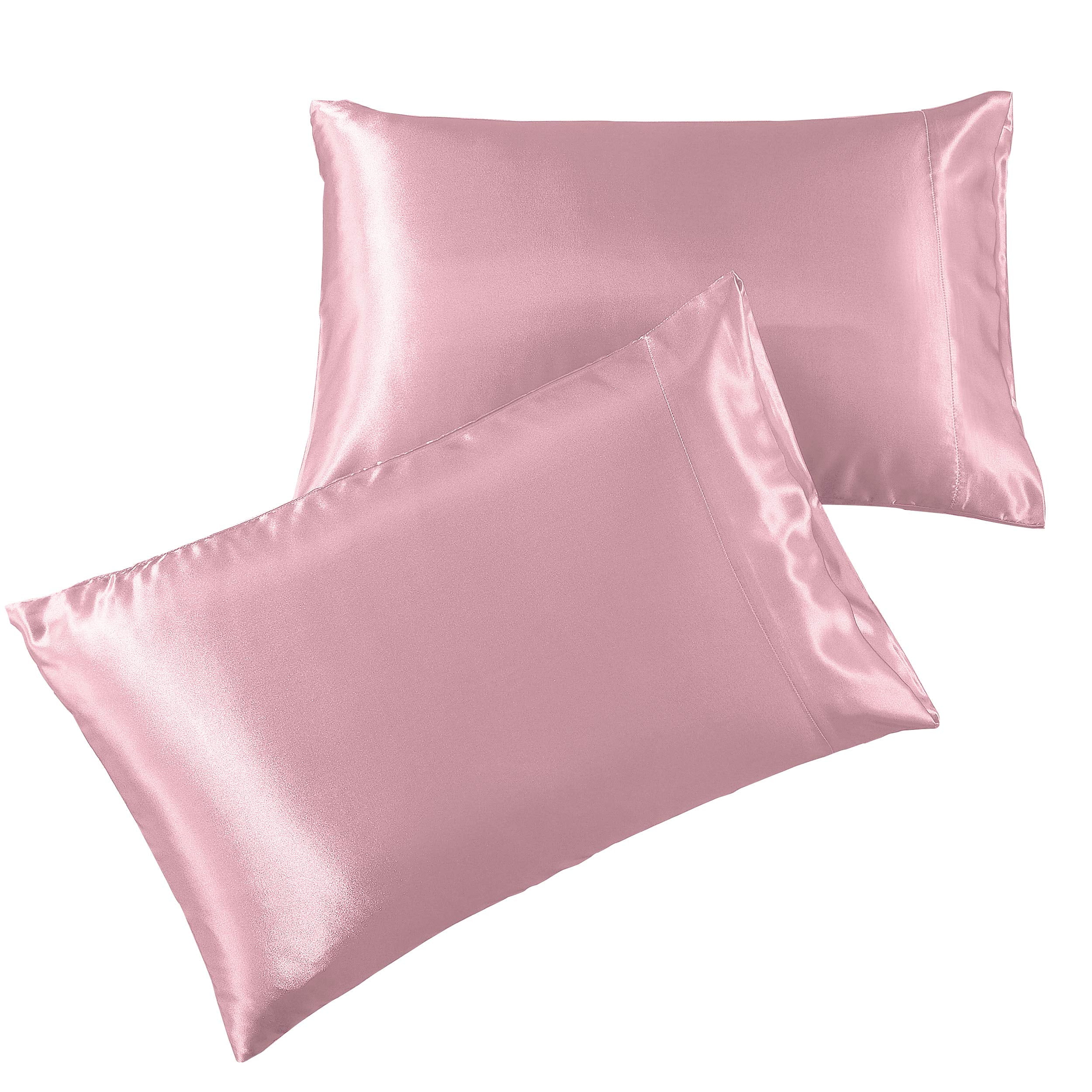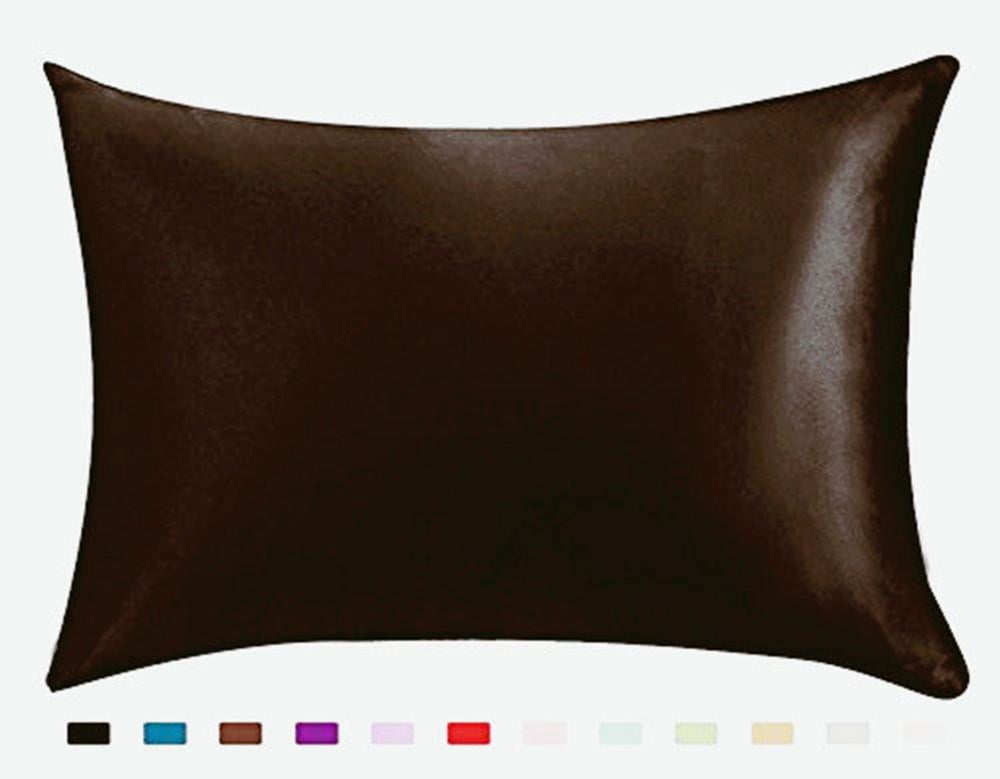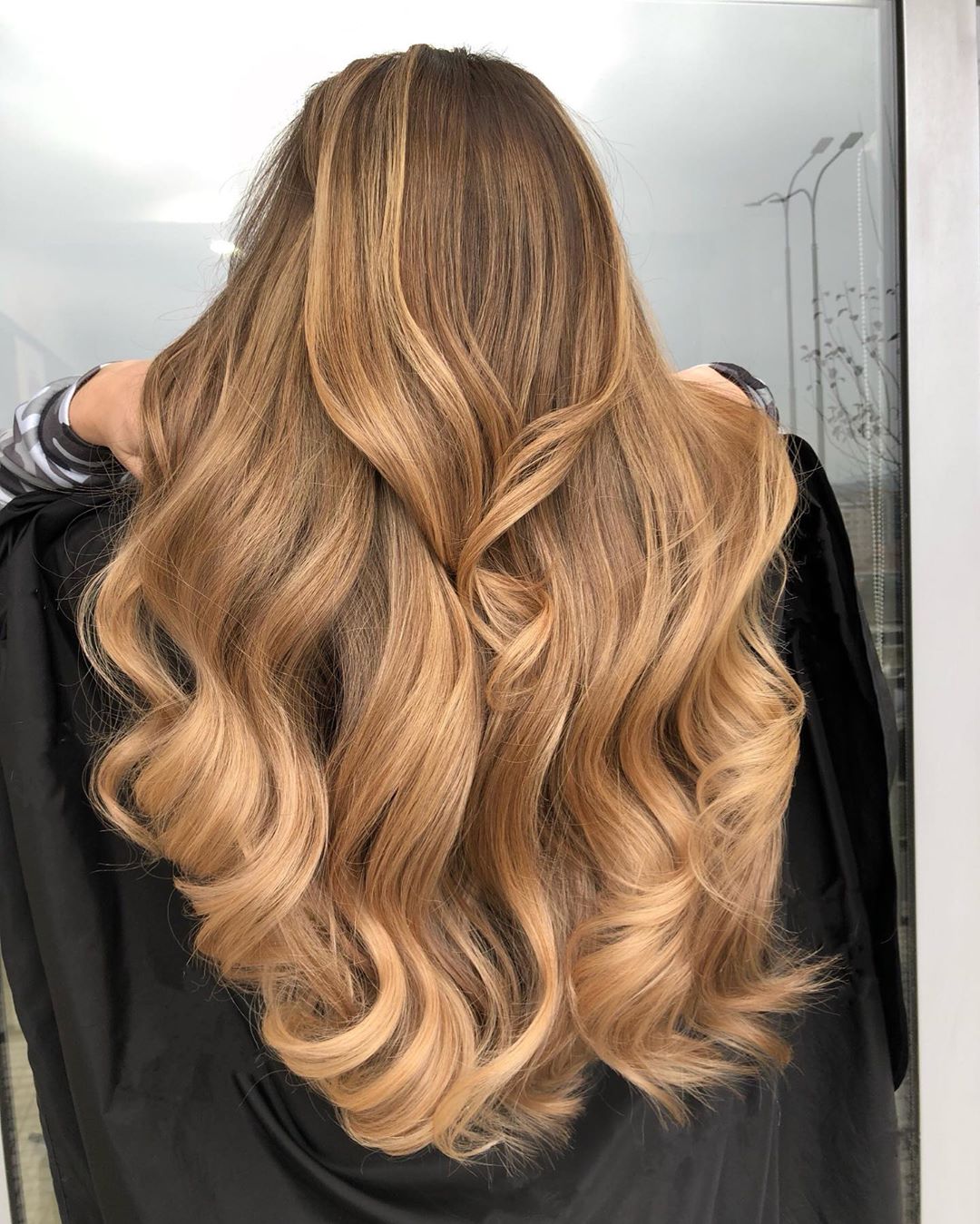Table Of Content

That can mean less frizz and hair breakage, and possibly better skin. The biggest difference between silk and satin pillowcases is that silk is a natural fiber, while satin is a woven fabric. Because of this, silk is usually softer to the touch, and more expensive.
The 11 Best Silk Pillowcases in 2024: Slip, Fishers Finery, More - Harper's BAZAAR
The 11 Best Silk Pillowcases in 2024: Slip, Fishers Finery, More.
Posted: Fri, 12 Jan 2024 08:00:00 GMT [source]
Reasons You'll Want to Start Sleeping With a Satin Pillowcase Tonight
If you prefer satin because it better aligns with your budget, it's still a huge upgrade from a cotton pillowcase. If you're really concerned about the slight loss of moisture, Onuoha suggested giving your curls a quick oil treatment. According to The New York Times, silk is a natural fiber produced by insects to create their cocoons and nests. It was first developed in ancient China, and the silk trade started over 3,000 years ago.
Lunya Washable Silk Pillowcase
In addition to Kitsch’s lineup of scrunchies and hair accessories, the brand offers satin pillowcases suitable for all hair types and textures. Fishers Finery 25-momme silk pillowcase is slightly thicker than other options made with similar materials. If you’re looking for the most luxurious silk pillowcase, this is the one to consider. Some satin pillowcases have specific temperature requirements or delicate washing instructions, such as handwashing or dry cleaning.
Best Overall: Slip Pure Silk Pillowcase
15 Of The Best Silk Pillowcases, From Just £12 - Marie Claire UK
15 Of The Best Silk Pillowcases, From Just £12.
Posted: Fri, 12 Apr 2024 07:00:00 GMT [source]
"Silk hair protectors like scarves or bonnets help reduce the friction caused by laying on a cotton pillow, which causes split ends, knotting, frizz, tangles, and hair damage," explains Bergamy. "Silk helps to keep the moisture in the hair, while cotton pillows or scarves absorb natural oils leaving hair dry and brittle." Though they’re designed to protect hair from damage, these satin pillowcases also benefit your skin. The slippery surface helps to reduce facial creasing, which can help reduce wrinkles over time.
Rivera recommends Slip’s Pure Silk Pillowcases, which she says are a must for combating friction that can cause breakage and bedhead. Silk and satin pillowcases should be washed pretty regularly with gentle laundry detergent, like The Laundress’ Delicate Wash, to remove hair and skin oils and bacteria. I try to wash or change my satin pillowcases every time I wash my hair. Sleeping on a silk pillowcase may help prevent fine lines over time thanks to this reduced friction. It’ll also help you avoid those unattractive pillow creases you encounter from sleeping on cotton.
The high quality silk may also help prevent wrinkles, since the smooth surface reduces skin creasing, especially among side sleepers. If you’re new to silk pillowcases, you might not be familiar with momme. But many agree that 22 momme is the sweet spot for pillowcases since it’s not too thin or thick. If you have allergies, sensitive skin, or respiratory issues, you may want to wash your satin pillowcases more frequently to remove potential allergens and irritants. It is especially important if you use hair products, have oily or acne-prone skin, or live in a humid or dusty environment.
How often should you wash silk pillowcases?
Silk pillowcases are considered the gold standard for beauty sleep. If you want to be extra gentle on your hair and skin at night, consider investing in a silk pillowcase. The advantage of traditional cotton pillowcases is they’re easy to care for, clean, and maintain in good condition. With a little extra care, your silk or satin pillowcase can also remain in great condition for a long time. Silk pillowcases can be pricey, but you really only need one side to sleep on. This smart design has a 100% silk fabric on top with a cotton underside to make it more affordable.

Over time, the satin fabric can be prone to snagging and pilling, which may make it show signs of wear and tear and reduce its life span, necessitating more frequent replacements. Also, as previously mentioned, satin isn’t as absorbent as cotton, so it won’t absorb moisture from your skin and subsequently cause dryness. Additionally, sleep wrinkles can form when you sleep on your side or stomach on a cotton pillowcase. This means they can help your hair retain moisture, keeping it hydrated to prevent dryness and promote softer, healthier locks. Nowadays modern satin can be made from various materials, including polyester, rayon, and blends of different fibers.
Satin pillowcases, particularly those made from synthetic fibers, may not be as durable as other fabrics like cotton. Also, satin pillowcases don’t provide as many places for bacteria and dust mites to hide compared to rougher fabrics. The tightly woven surface of satin pillowcases makes it difficult for dust, pollen, and other allergens to become trapped in the fabric. But satin’s soft and smooth texture minimizes friction to prevent these issues and keep your skin comfortable. Satin has a smooth, tightly woven surface that allows it to repel moisture, making it less absorbent than fabrics like cotton. The only drawback to satin pillowcases is that they might not be ideal for hot nights for some people.
In the end, unless you have allergies, satin pillowcases should give you the same frizz-free hair and crease-free face when you get up. If your hair is fine, dry, or prone to tangling, the silkiness of a satin pillowcase means no more waking up and looking like a matted Yorkie. Satin is a type of weave and can be made from a few different fibers. (Fibers are the threads that make up materials.) You can find satin weaves made from silk, rayon, polyester, and blends.
For generations, African American women have used satin scarves to wrap and protect their hair at night. The wisdom extends to silk pillowcases, with celebrities like Cindy Crawford and Victoria Beckham jumping on the trend. Taylor recommends washing your pillow once per week to avoid bacteria and product buildup that could result from your evening skin and hair care routines. For those with sensitive skin, the MYK silk pillowcases are OEKO-TEX Standard 100 certified, which means the fabric is free of harmful chemicals. Though these pillowcases have a zipper closure, the zippers are well hidden on the sides and designed to blend in with the color of the fabric. Dry cleaning or handwashing is recommended, but machine washing is advisable with specific instructions.
No matter what you seek or your individual needs and concerns, Allure wants to ensure that you love anything we recommend in our stories. We believe that having a diverse team of writers and editors — in addition to the wide range of outside testers and industry experts we regularly call upon — is essential to reaching that goal. “The difference is that silk is a natural fabric made from the cocoons of silkworms, while satin is created by weaving together synthetic fibers, like polyester,” Dr. Gonzalez says. I found an affordable satin version (less than $20!) that delivers similar results to silk pillowcases, which can cost $100 or more. While satin might look like silk, they're not exactly one in the same. Satin used to be made from silk; however, today, it's often created with a blend of cotton and synthetic fibers like polyester and rayon.
Lexie Sachs is the executive director of the Textiles, Paper & Apparel Lab at the Good Housekeeping Institute, where she oversees all bedding evaluations. She has been hands-on testing silk pillowcases since they became popular in the U.S. in 2016, and has since tested dozens of real silk and synthetic satin options. Lexie sleeps on a silk pillowcase every night and personally swears by its benefits. Because silk pillowcases keep hair healthy and intact, they can also help you stretch out your washes—and the damage-inducing heat styling that often comes with them. Pros recommend limiting your shampoo sessions to 2-3 times per week, and sleeping on silk will allow you to do just that, sans grease. "Silk doesn't do that. So all the moisture and oils maintain on your skin and hair."
Additionally, if your pillowcase becomes visibly soiled or stained, it’s advisable to wash it promptly. They often need to be washed on a gentle cycle with mild detergents, and they should not be washed with bleach or fabric softeners. It allows air to circulate more effectively compared to other fabrics, which can help regulate body temperature while sleeping, reducing the chances of excessive heat or sweating. Rougher fabrics create friction against the skin, leading to irritation, redness, inflammation, and discomfort. As a result, the skin experiences less compression and pressure on specific areas, which reduces the formation of sleep wrinkles. We’ll tell you what they can do, how they work, and why they work.
She has over 15 years of experience in the consumer products industry and a degree in fiber science from Cornell University. Lexie serves as an expert source both within Good Housekeeping and other media outlets, regularly appearing on national broadcast TV segments. Prior to joining GH in 2013, Lexie worked in merchandising and product development in the fashion and home industries. A lower momme, like 19 momme, tends to be lightweight and has a lower price point, while a higher momme is considered high-quality silk and tends to be more durable.

No comments:
Post a Comment